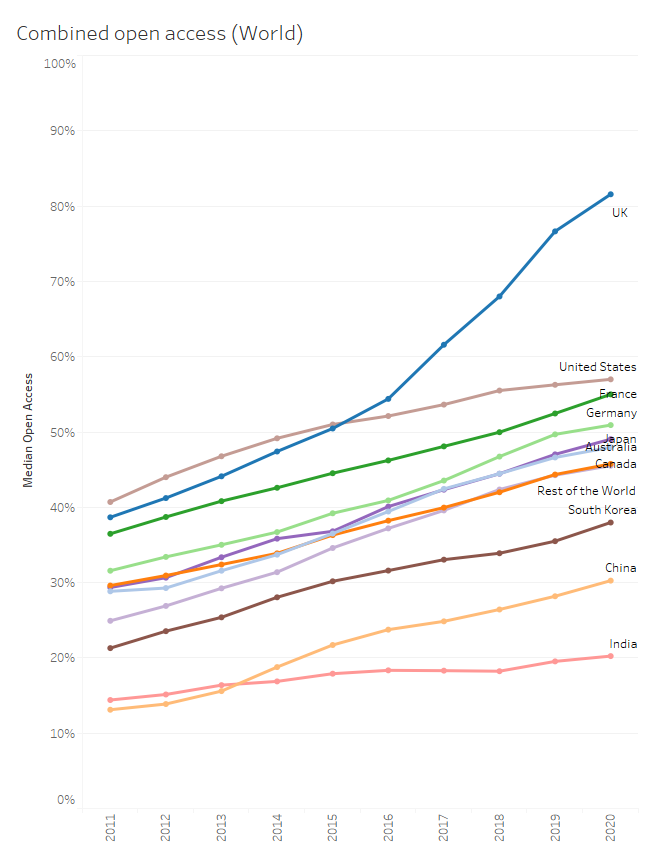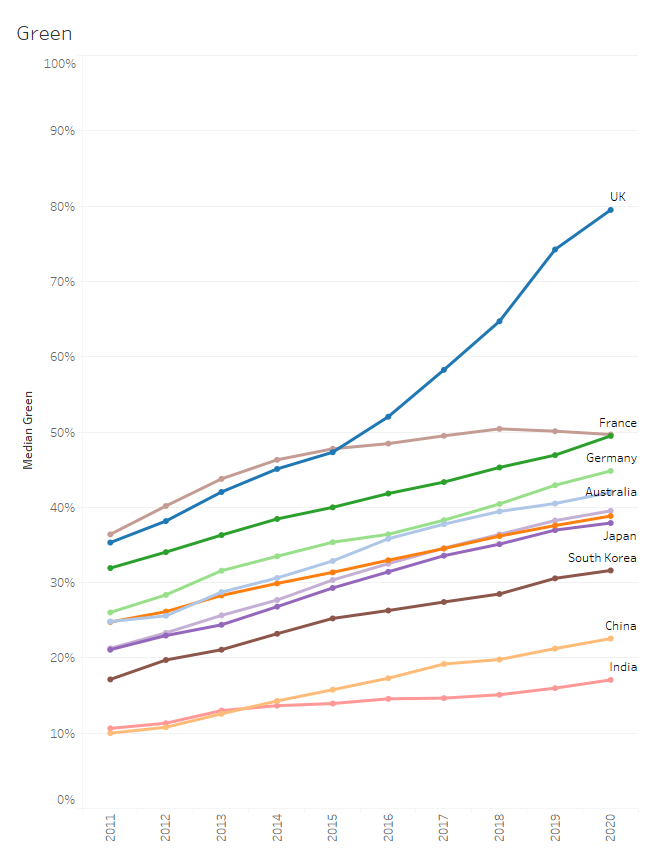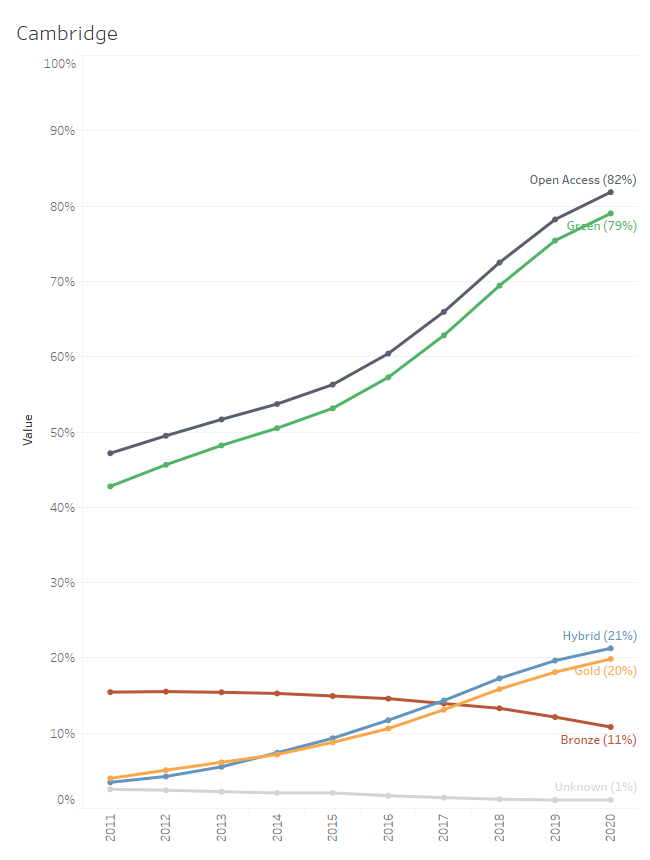The Open Research at Cambridge conference took place between 22–26 November 2021. In a series of talks, panel discussions and interactive Q&A sessions, researchers, publishers, and other stakeholders explored how Cambridge can make the most of the opportunities offered by open research. This blog is part of a series summarising each event.
In our recent “Why OA should be your first choice” webinar hosted by the Cambridge University Library, attendees heard just how advantageous it is to opt for Gold OA when publishing their research. Backed by data pulled from recent analytics, our guest speakers illustrated the advantages and innovation taking place a Cambridge University Press, while also dispelling OA myths. Despite the challenges that apply to authors (such as funder requirements, national mandates, or differentials of income), there is a clear advantage of publishing open access.
As an non-profit Academic Publisher, we support the dissemination of knowledge and we strive to make OA equitable and sustainable to researchers across different career stages, disciplines, and regions worldwide.
The recording of the session is available here:
OA Advantages for Journal Authors
“ Mounting evidence of and OA advantage – across all disciplines, substantial in scale, material in respect to impact, prolonged over time” – Daniel Pearce, Publishing Director, HSS Journals.
- A broader spectrum of authors are able to go OA due to transformative agreements (also known as Read & Publish)
- Across our disciplines OA articles receive 3 times more usage within their first year than subscription articles. Gold OA articles receive more citations within two year across HSS and STM in contrast to non-OA articles.
- Increase Impact: 61% more mentions on social, 185% more likely to be referenced in new media or blogs, and 52% more likely to be referenced in a policy papers
OA Advantages for Books & Elements Authors
“Flip It Open permits researchers to have the opportunity to get OA and makes research publicly accessible” – Andri Johnston, Digital & OA Projects Editor
- Within the first 12 months usage is exponentially higher for OA books and OA Elements since each chapter can be used, shared, and cited
- Sharing increases exponentially when all the chapters of a book are OA and OA books usage is 11-66 times higher (depending on the discipline).
- Our Flip It Open program flips standard monograph as soon as they reach a specific sales threshold. Revenue for the title is generated thru institutional sales
- Downloads for OA Elements gradually grow after 3 months, whereas downloads for non-OA Elements pan out after 4 weeks. Plus, OA Elements usage is 3 time higher than their non-OA counterparts.
- OA helps alleviate disparities of foreign currency exchange, differentials of income, intellectual exclusions and makes publicly funded research accessible
OA Myths
“Removing barriers allow research findings to go far beyond siloed departments of research communities, with just internet connection.” – Andrew Sykes, Journals Marketing Director
- “There’s no benefit to me”. OA content is freely available online with increased discoverability and higher citation and downloads for your work.
- “OA means low quality”. Quality for CUP is paramount importance. All OA articles and book submissions to Cambridge go through the same peer review publication process as non-OA submissions. Predator publishing can be found through the Think Check Submit website to verify validity of journal
- “OA is too expensive to me”. CUP has a number of publishing agreements with institutions, which means you may be able to submit your work OA without paying a fee. Cambridge also partners with Research4Life which enables researchers from low- medium income countries to publish as open access.
Learn more here: Open Access at Cambridge University Press



